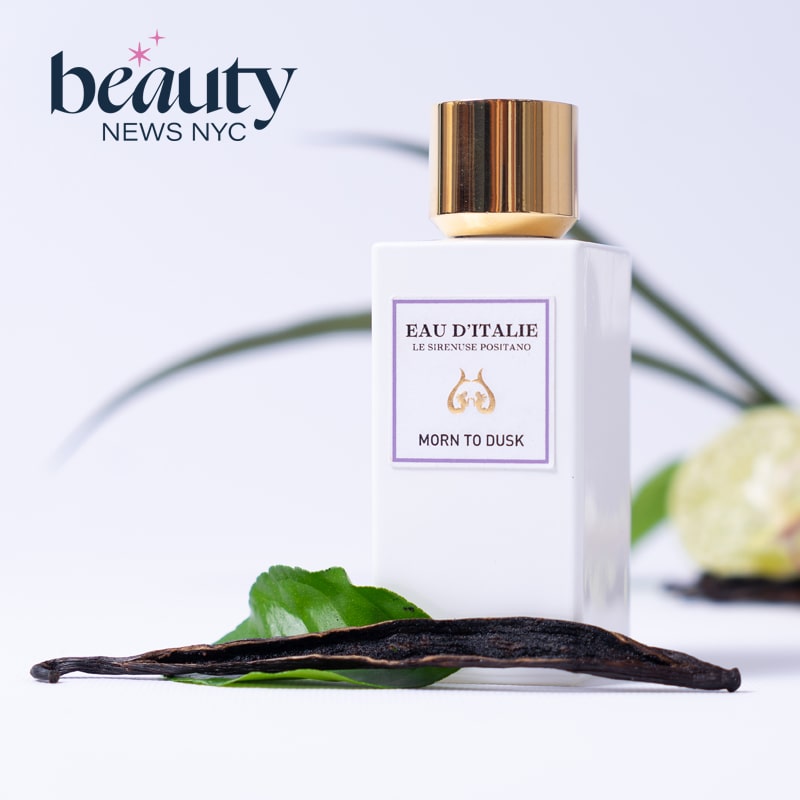Eau d'Italie Mystic Sunset Eau de Parfum and MORE as seen on BeautyMatter.com...
and available online at Beauty Frontier
Between History and Avant-Garde: The Italian Perfumery Landscape
From the opening of Officina Profumo-Farmaceutica di Santa Maria Novella in Florence in 1221, to Eustachio Celebrino, a well-known author and engraver from the Province of Udine, writing one of the first-documented collections of fragrance formulas in 1551, the history and legacy of Italian perfumery spans centuries. Journalist Marika Vecchiattini even dedicated an entire book to the subject: The Handbook of Great Italian Perfumery. But as the country’s $1.27 billion industry shows, one can’t solely rely on pedigree to stay afloat in the competitive market.
A vast variety of strong talents across the board is where its national scentmaking shines: the finest and up-and-coming artisanal talents showcase their ranges at Esxence in Milan annually, while long-standing blockbuster scents like Light Blue by Dolce & Gabbana or Blu Mediterraneo by Acqua di Parma continue to see steady sales numbers. Similar to France, a distinctive portion of Italian perfumery is rooted in the country’s strong fashion roots, a natural branding extension, with iconic houses like Gucci, Versace, and Valentino.
La vita è bella (Life is beautiful)
What is the secret proverbial sauce that defines the country’s olfactory style? “Italian perfumery is an art informed by landscape, history, and fashion,” Creative Director of The Merchant of Venice, Nicola Pozzani, explains. “It is defined by iconic raw materials such as the king of citrus, bergamot, which only grows in the south of Italy, Calabria, and others such as iris, which was a favorite of Caterina de Medici, a Renaissance power lady who influenced the French courts and is credited as the one who brought perfumery to France when she became queen of it.”
When it comes to his own creative process, Pozzani, who takes a self-described “minimalist but experimental” approach, has developed creations like Venetian Jade, a Harrods-exclusive amber floral fragrance with notes of quince, pecan, suede, rose, and tonka bean; Gyokuro, a fruity green composition of black pepper, tea, peach, tuberose, and ambergris; and, in honor of minimalism, the Accordi Di Parfumo range, a line of various accord fragrances that can be layered or worn as stand-alone perfumes.
Whether it’s the aforementioned Calabrian bergamot or the ancient architecture of Rome, there are certainly many geographical references turned creative ingenuity to be found. “Italy remains a country uniquely rich in arts and culture which are always the inspiration of perfumers,” Pozzani adds. “The proximity of breathtaking natural landscapes, the rich food culture, and the constant celebration of beauty… it's a constant celebration of the senses, just like fragrance is.”
Sebastián Alvarez Murena, co-founder at Eau d’Italie, states that “The essence of Italy can be partially defined by the consciousness of beauty and elegance. The beauty and elegance are not necessarily a personal feature of individuals, although of course it can be, but rather that of everyday life in Italy, where beauty is a main defining factor. ‘Il senso del bello,’ ‘The sense of beauty,’ is something that governs everyday life in Italy, and it’s something with a proper weight and values, same as, say, moral or economic factors.” After all, wasn’t it the Anchiano-born Leonardo da Vinci who developed the recipe for beauty when he coined the golden ratio?
Honoring the Old with the New
Lush, although a UK-based brand, recently decided to make Florence the home of its first stand-alone Perfume Library, housing not only an exclusive range of fragrances alongside the company’s existing fine fragrance range, but also more than 70 publications exploring aromatherapy, the history of perfumery, and regenerative practices.
The brand recently launched a collection of five Florence-exclusive scents—Fresh As, Nero, Frangipani, Sappho, and Confetti—which take inspiration from said Italian city and the Renaissance, citing inspirations such as the traditional sugared almond wedding confectionery referred to in Italy as confetti, and Princess of Nerola’s neroli-fragranced gloves, as reference points. Furthermore, fragrance consultations at its Italian Perfume Library are conducted using Hippocrates’ theory of the four humors (blood, yellow bile, phlegm, and black bile), a belief system guiding medical approaches during the Renaissance period. All of these humors also have coinciding elements—from sweet to salty, bitter to earthy—which translate into the aromatic realm.
“The Perfume Library had to be in Florence because it was the birthplace of modern perfumery during the Renaissance. It is hard to not take inspiration from such a place and we really indulged ourselves in its history, art, and iconic sights," comments Mark Constantine OBE, Lush co-founder and perfumer.
For Eau d’Italie—which launched in 2004 with the Le Sirenuse hotel in Positano as the muse for its namesake debut fragrance—beauty and elegance are the North Star of product creation. That equates to scents inspired by the floral grandeur of Capri (Un Bateau Pour Capri), the practice of scenting homegrown leather goods (Jasmine Leather), and the sights of sundown on the Amalfi coast (Mystic Sunset). When asked what defines Italian perfumery, Alvarez Murena responds: “A fresh approach to ideas, a lack of prejudice, a frank, unencumbered disposition that allows for fragrances which are always contemporary, never old or stale in their conception.”
It’s not only brands that the country is offering the world of perfumery, but noses aplenty too: Luca Maffei (who has created fragrances for the mass and niche market alike, such as Cupola for Salvatore Ferragamo and Parfums Quartana’s latest creation, Ierofante), Lorenzo Villoresi (founder of the namesake fragrance line), and Alessandro Gualtieri, the perfume provocateur behind Amsterdam-based fragrance house Nasomatto, to name a few. “Leaving aside the wealth that popped up from the 1960s onwards, Italy has historically been a poor country, a country of emigration. That constant struggle with life has somehow sharpened the Italian’s imagination and their capacity for coming up with beautiful illusions,” comments Alvarez Murena.
The Italian Avant-Garde
All things classical and picturesque certainly hold a place in the heart of any Made in Italy perfume lover, but there are also more unconventional affairs to be found. Masque Milano, founded by Riccardo Tedeschi and Alessandro Brun in 2013, applies an operatic approach to fragrance production, with scents released in acts. Ray-flection, described as “an alien flower,” is nourished by notes of mandarin, aldehydes, a solar rays accord, and beeswax absolute, while White Whale tells the tale of Moby Dick with facets of salty rope accords, ambergris, osmanthus, orris, and cedarwood.
UNUM, the brainchild of Filippo Sorcinelli, began in 2014 with the frankincense bombshell LAVS, a fitting entry into the fragrance category given the heavy Gothic art origins of the brand: Sorcinelli’s The Sacred Vestments Atelier, used for the study and manufacture of objects for sacred liturgy, such as the robes of Pope Benedetto XVI. The olfactory creations are not for the faint of heart, as UNUM’s existing range of products are described as “eleven fragrances to describe the uniqueness of a journey suffered and intense.”
Antonio Gardoni’s brand, Bogue, described as “contemporary fragrances with ancient techniques and modern intuitions,” has released perfumes such as Douleur (which is the French word for “pain”), a metallic-notes-meets-cotton-candy scent created in collaboration with tattoo artist Freddie Albrighton, and Lita, an amber floral perfume with smells of coriander, tobacco, champaca, and myrrh, created with band Duo to replicate the mood of their album release with “a dark and smoky aroma.”
Regardless of which aesthetic avenue one wanders down, the rich creativity of Italian perfumery, past and present, shows that all roads do indeed lead to Rome, at least olfactorally speaking.




